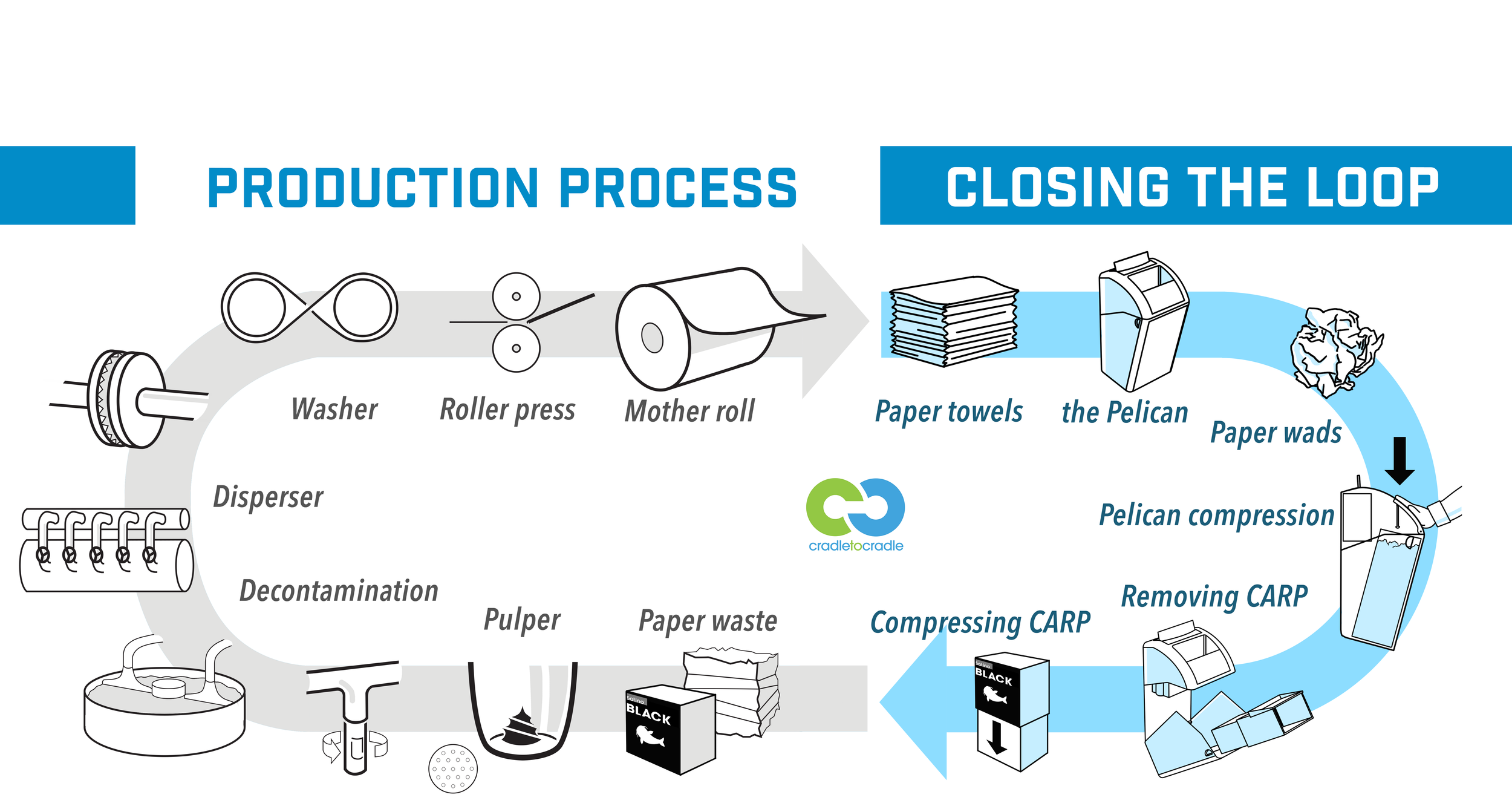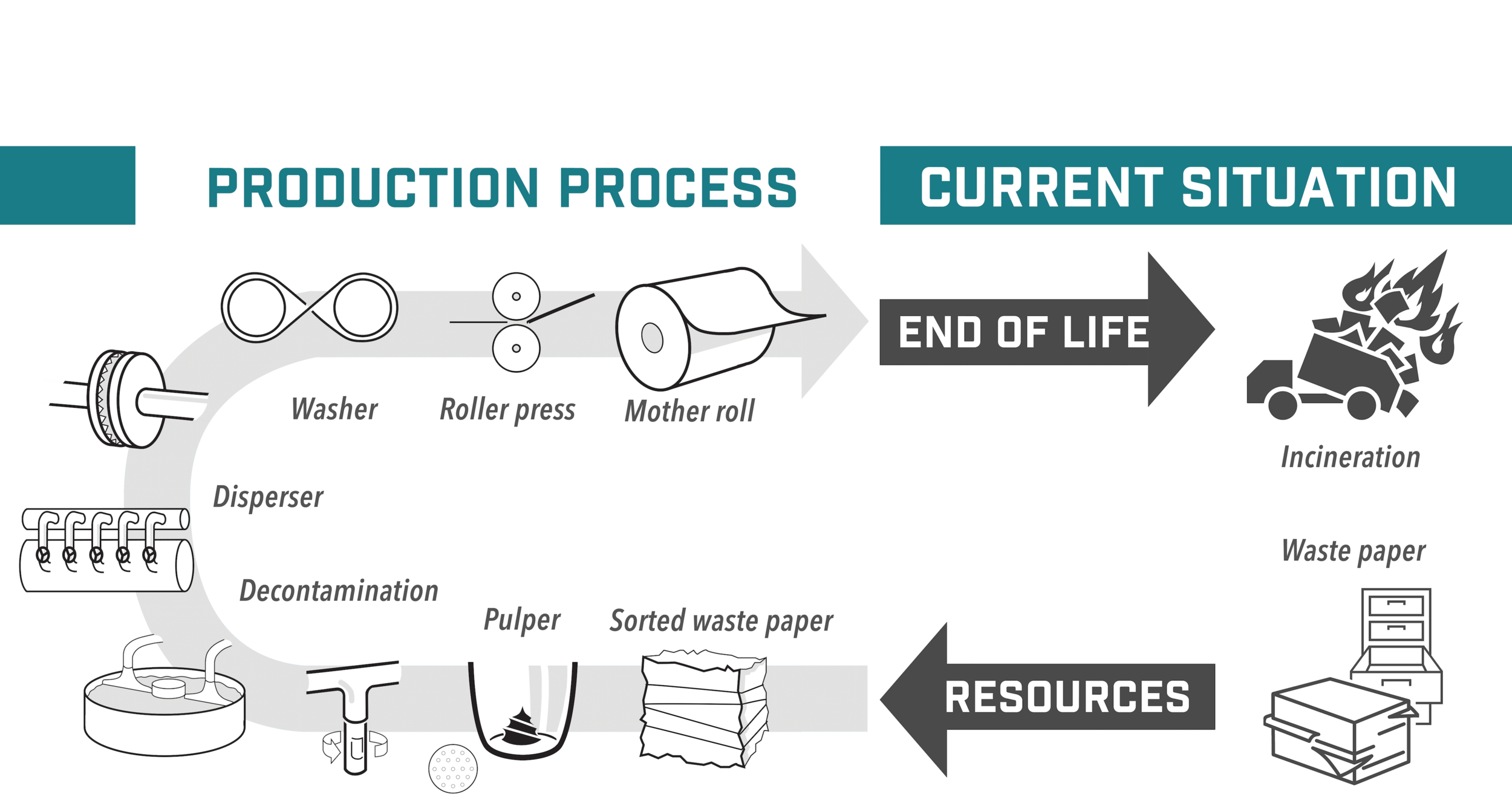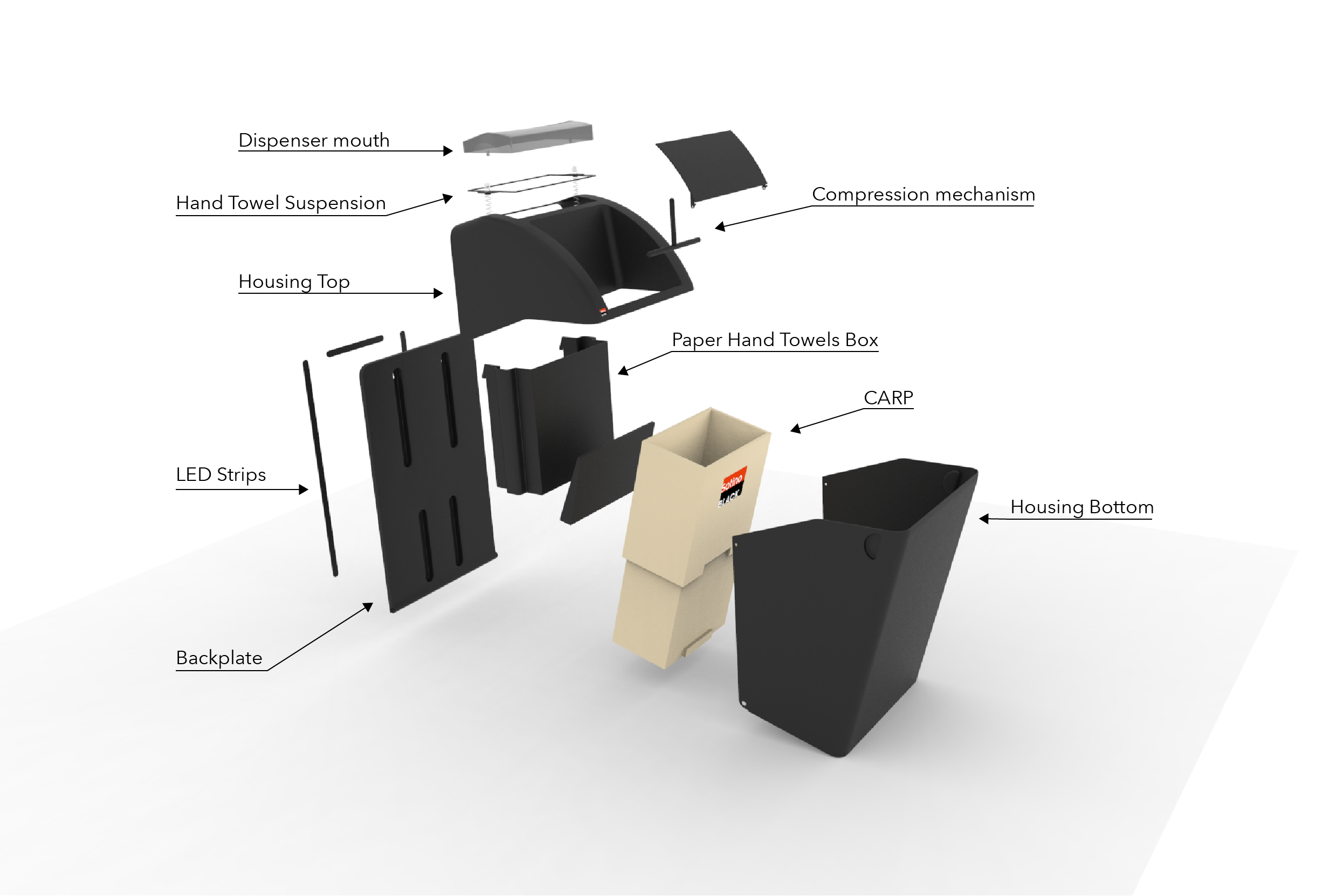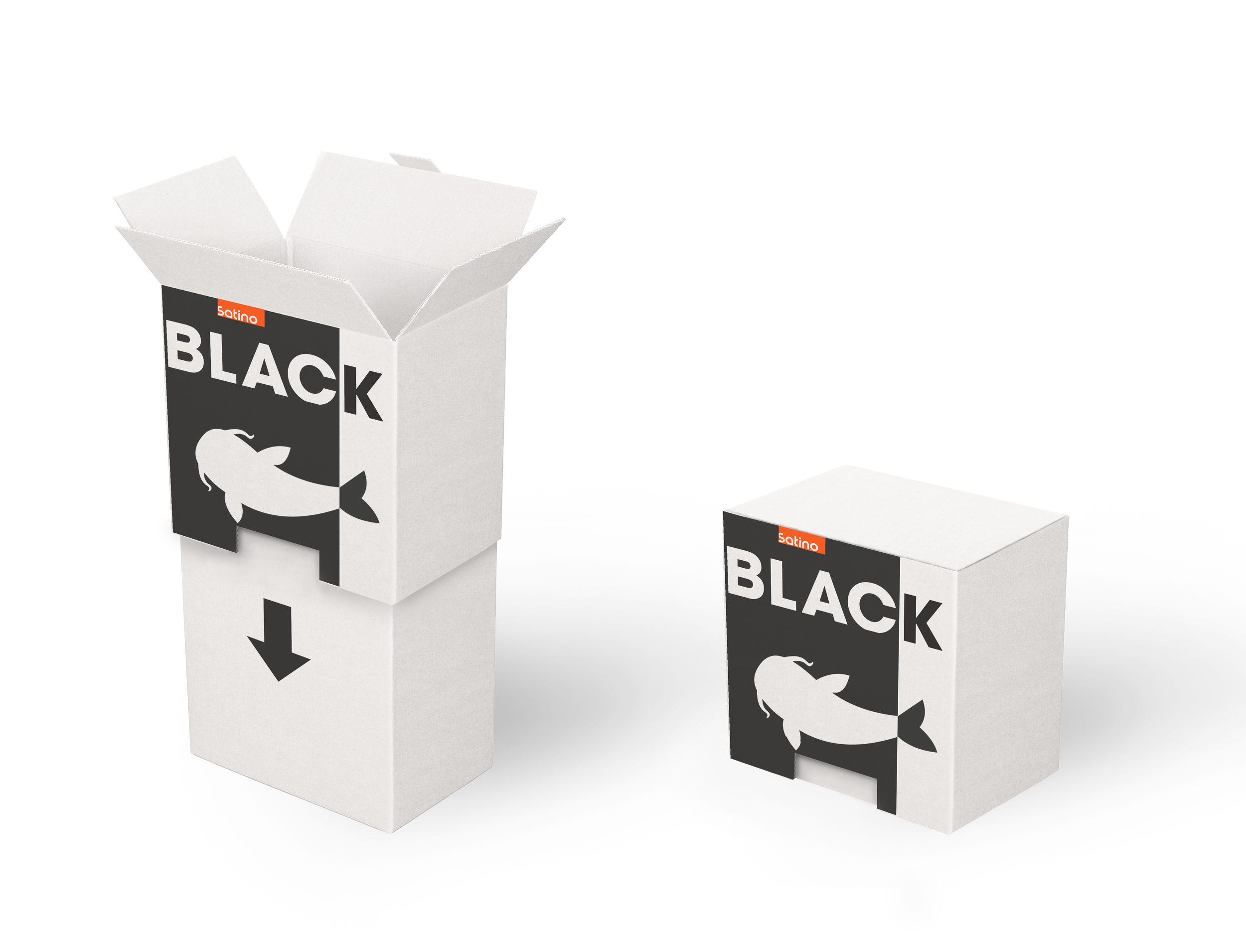Van Houtum
Van Houtum Pelican
Joint Master Project
Introduction
In a Joint Master Project, a student team of different master disciplines is assigned to a company and take on an assignment. In our case we worked for Van Houtum, a relatively small toilet paper manufacturer based in Limburg, The Netherlands.
Van Houtum BV is an hygienic paper producing company, offering complete solutions for the sanitary environment for business-to-business customers. The main focus of Van Houtum is on the people, planet and profit. Since 2007, Van Houtum is oriented in the Cradle to Cradle principle, which stands for eco-effective products/services.
From a product-focused design brief to an integrated product-service concept
The original design brief was to design and embody a tool or dispenser that would make sure the used paper towels could be taken back into the loop for recycling. During the analysis it was clear such an approach would not have the desired effect. We convinced the client to step away from the traditional design roadmap.
We chose a different approach and worked with the Vision in Product design method that focusses on the relationship between user-product in the current and future context. This method stimulates radical innovation without losing a sense of origin by forming a clear vision.
Although we took a different approach, the final result still served the original design brief but in a more meaningful way and was meant to inspire the company and client for a better future.
The Pelican
The final concept “the Pelican” consists of a single product combining the functions of a paper dispenser and garbage bin, symbolizing the direct link between used and new, but recycled, paper towels. The product has a simple shape, matching the aesthetics of the products currently in the Satino Black product portfolio. The wall mounted product has the same mounting plate principle as the current garbage bin but hangs a bit higher, to make it easier to reach the paper, placed behind the garbage opening. LED strips on the back of the product spread a soft glow behind the product, giving clues on the current sanitary state of the product. Sensors in the product keep track of its usage and notify the customer and Van Houtum about the need to refill. The materials, production processes and the mounting plate were kept the same as those of the existing dispensers of Van Houtum.
The packaging for the bundles of paper towels is another crucial part of the new product. It combines the container for new towels with the container for old ones for easy recycling. During the project, this package has been dubbed “the Cardboard Asset for the Reutilization of Paper”, or “CARP” for short. The CARP contains two sets of satino black paper towels and can be extended to twice its original height to account for the increase in volume of used paper towels.
Vision in Product - design method
For the first two phases we used the Vision in Product design method to form a future context structure and distill a mision statement to create a desirable behavioural change. It starts by collecting context factors within the design domain. We searched for trends, developments, states and principles that were relevant in the hygienic sanitary journey in 2030 in BeNeDeLux.
An intermediate result from the ViP method is the ‘dystopia’, a relationship between clustered context factors. It forms a structure between different behaviours and the dynamics. From the dystopia we formed a mission statement in order to aspire the creation of a utopia. The mission statement forms a guiding line and a source of inspiration later on in the ideation phase.
‘In the domain of a hygienic sanitary journey in the BeNeDeLux in 2030 we want people to actively contribute to improve and maintain a hygienic sanitary environment.’
Future vision
Based on the mission statement we’ve developed several design directions. From these directions we found out from focus groups that the act of nurturing seems to have the biggest impact. Our future vision in that regard is an organic room; a room that responds to the behaviour of the consumer in the sanitary environment. When the desired hygienic behaviour is displayed the entire environment flourishes, but if this is not done, the room deteriorates. Aside from providing a visual incentive to the user, this vision attempts to instil a feeling of a community with a shared responsibility.
Matrix of clusters that shows the future context structure and relationship between the behaviours.













